This is the second installment of our Star Wars Week review series. You can read our review of Star Wars Episode I: The Phantom Menace here.
After the insane backlash against The Phantom Menace, it seems as if George Lucas would want to pull out all the stops to get the fans back on his side for the sequel. He needed a movie with less Jar Jar, more Sith, and a clear-cut protagonist so that the audience would have a character with whom they could identify. With the clock ticking down to the end of the Prequel Trilogy, he also needed to set a course for Anakin’s downfall while also setting up a chain of events that would ultimately lead to the extinction of the Jedi. And even though most of these things didn’t need to come to fruition until the third movie, the sheer number of story elements required for Episode II combined to make one pretty tall order.
But beneath all that, Attack of the Clones is a movie that had one job.
What was that job? From the looks of things, you’d think it was to take everything that made The Empire Strikes Back one of the most revered films in the Original Trilogy and replicate it for a modern audience. It may not be readily apparent, but it’s there. And if that’s truly the case, then Lucas failed about as hard as he possibly could.
Before I can really dig into the details on that, I’ll have to recap just a bit.
We learn right off the bat that Count Dooku has somehow influenced thousands of solar systems to secede from the Republic. Padmé is now Senator Amidala instead of Queen of Naboo (which means she no longer looks like a geisha), and she is leading the opposition against the Senate’s attempts to build an army.
Basically, what’s happening is that Chancellor Palpatine is quietly pulling the strings to overthrow the Republic so that he can establish the Empire. This is an interesting twist on the Original Trilogy, since the rebel separatists appear to be the bad guys this time. But given that Palpatine clearly needs the Army of the Republic established to complete his plan, the Republic are the bad guys as well. Much like Empire, this is a movie in which the Dark Side appears to be set for victory.
As Obi-Wan and Ani Skywalker play security to the Senator, we’re treated to something the last movie never delivered—a real view of Coruscant as the bustling city-world that it is. We see them flying through the streets on speeders, falling ridiculous heights past Aurubesh billboards, and eventually entering a club that appears to be the Star Wars equivalent of a sports bar.
After Skywalker and Kenobi hunt down Zam Wesell, a Clawdite changeling sent by the bounty hunter Jango Fett to kill the Senator, the movie begins to follow about the same structure as The Phantom Menace. And by that, I mean very little plot is stretched out over a practically unbearable hour until we finally reach an hour’s worth of action sequences.
This actually leads to a major problem. Much like Episode I, we spend a great deal of the movie wondering who our protagonist is.
First, there’s Obi-Wan. He and Anakin split up after Wesell is killed before she can give them Jango’s name. Kenobi takes the dart that killed her to a friend named Dexter Jettster, a Besalisk with a sketchy past who now works at a greasy spoon on Coruscant. When Obi shows him the dart used to kill Wesell, Dex tells him that it appears to have come from Kamino. Apparently, a deceased Jedi Master named Sifo-Dyas commissioned the cloners on Kamino to create the Army of the Republic more than a decade ago, and they now have over 200,000 units ready. All of them are clones of Jango Fett, altered to be docile and to exhibit accelerated growth rates. The only exception is the young clone Boba, who Jango treats like a son.
Jango recognizes Obi-Wan and tries to take him out, but Kenobi survives and follows him to the desert planet Geonosis. There, he witnesses a meeting between Count Dooku, Nute Gunray, and a few other evil-looking union leaders. It’s unclear how a secession involving thousands of solar systems is supposed to be organized by a meeting of less than a dozen people, but whatever. The real twist is when Dooku’s forces capture Obi-Wan, leading to a discussion in which he reveals that the Senate is being run by Darth Sidious. For a moment, it appears as if Dooku might be the good guy, and that the separatists are actually the progenitors of the Rebel Army. But Obi-Wan doesn’t believe him, and Dooku allows him to be sentenced. Fortunately, Kenobi sent out an emergency transmission to Anakin just before he was captured.
Most fans probably know all that, so why am I recapping it? Because that is a busy, busy plotline. And what is Ani doing up until he receives that transmission?
Going on dates. Lots and lots of dates. He’s supposed to be providing security for Padmé on Naboo, but they spend most of their time eating dinner and sharing awkward conversation.
To be fair, that’s not all Anakin does. Just most of it. He also returns to Tatooine to see his mother and discovers from Watto that she was sold to a man named Cliegg Lars who eventually freed and married her. Anakin visits Cliegg, setting him up to meet his new step-brother, Owen. He also meets Owen’s girlfriend, Beru. If that sounds like Luke Skywalker’s aunt and uncle are just shoehorned into the movie without doing anything for the plot, you’re right.
And that’s all this Tatooine sequence is doing, in a nutshell—setting things up for a movie you’ve already seen. After Anakin learns from Cliegg that Shmi was abducted by Tusken Raiders, he tracks down their camp and finds her. Unfortunately, a month of torture has left her in bad shape and she dies. Anakin then murders the entire camp. Filled with hate, he returns and tells Padmé that he even took out the Tusken women and children, after which we’re treated to a brief snippet of “The Imperial March.”
So who’s the protagonist? Obi-Wan does all the real legwork in driving the plot, but the movie’s emotional substance rests solely in the hands of young Skywalker. Again, it’s weird that this problem is only ever brought up in terms of The Phantom Menace.
It doesn’t matter as much for the last half of the movie, because Anakin and Obi-Wan are soon reunited. Anakin receives the emergency transmission, leading him and Padmé to storm the droid factory on Geonosis. They’re captured by Jango and sentenced along with Obi-Wan, which eventually leads to a large gladiatorial battle at the Petranaki arena. The battle starts with our three main heroes and a few big monsters, but ends when the monsters are defeated and the arena is flooded by battle droids, Geonosians, Jango Fett, and the most Jedi we’ve ever seen fighting in one place. Finally, our string of action sequences ends as Obi-Wan, Anakin, and Yoda face Count Dooku in the final standoff. As things wrap up, we finally see the birth of the clone army.
With the recap out of the way, you might already be seeing some clear-cut attempts to replicate The Empire Strikes Back. And in order to talk about why Attack of the Clones is a failure in this department, we need to look at Empire’s key ingredients. As far as I can tell, the things that made Episode V so successful can be boiled down to the characters, the romance, and the sense of despair that gripped the audience when the final credits rolled.
The characters should have been easy enough to get right. Two of the greatest characters in Empire were Yoda and Boba Fett. Much as the first Star Wars revolutionized special effects back in the 1970s, Attack of the Clones was the movie that kick-started the trend of digital cinematography. It was even subjected to a somewhat limited release, because many theaters lacked the digital projectors needed to accommodate the film. If any movie was going to give us high-octane action involving Yoda and a jetpack-wearing bounty hunter, this was the one to do it.
Jango Fett actually delivers in this movie, but he’s not without his flaws. He establishes himself as a pro during his fight with Obi-Wan on Kamino, during which we also get to see Boba man the controls of Slave I (the Prequel Trilogy seems to have a thing about pre-pubescent pilots). The ship itself gets its own featured scene, releasing missiles and seismic charges during a chase scene through the asteroid belt above Geonosis. Both Jango and the Slave I are well-equipped, and make for some great action. And while Jango appears to use every weapon in his arsenal early on, he still has a few more tricks up his sleeve when he fights Mace Windu toward the end. Really, the only stupid Jango moment is when Obi-Wan loses his lightsaber and tries to pull some lame kung fu, but Jango counters that with a simple headbutt.
Still, it appears as if Lucas failed to understand what made Jango’s offspring such a fan favorite. The action was a part of it, yes. But Boba Fett was all business in Empire. From his first appearance to his ingestion by the sarlacc in Return of the Jedi, we never see Boba’s face. Not only do we see Jango unmasked, but the fact that he asked for a clone son gives him a soft spot that we didn’t really need to see. There’s nothing wrong with giving characters more depth. But when the main appeal of your character is that he’s a cold-blooded killer, it kind of ruins the mood to tell your audience that all he really wants is to be a dad.
Boba himself is somewhat ruined as well. Watching him sit in the backseat of the Slave I and chuckle as Jango fires charges at Obi-Wan’s ship is kind of fun, but the scene in which he picks up his father’s helmet in the arena feels off. First, why doesn’t Jango’s head fall out when Boba picks it up? Is Jango now a Force ghost, or is there a severed head lying somewhere off-camera? But more importantly, what are we supposed to learn about Boba from this? This isn’t his inspiration to become a bounty hunter—the fact that he knows how to operate the Slave I indicates that he was on that track to begin with. The scene might’ve felt justified if Boba were the one to kill Windu in Revenge of the Sith, but that’s not what happens. He does try to kill him in an episode of The Clone Wars, but a movie shouldn’t require you to follow its expanded universe in order to make sense of its plot.
Yoda is more of a letdown than Jango. Now, to be fair, he doesn’t actually do much in Empire. He looks cute, talks with a funny voice, and teaches Luke how to use the Force. So operating as one of the wisest and most revered members of the Jedi Council is technically all that should be expected of him. There’s even a nice little nod to Luke’s training, as you get to see Yoda leading a bunch of younglings in lightsaber defense.
The thing is, that scene feels pointless. It’s cool to see the remotes (those little laser-ball things), and I want to say that the only disappointing thing about the scene is that none of the kids get hit by the lasers. But the scene actually has an important place in the movie. Obi-Wan is there to visit Yoda because he can’t find Kamino in the Jedi Archives, but he’s noticed that there’s a spot on the map in which the stars have grouped around a planet’s gravitational pull. (Side question: Isn’t it planets that follow the gravitational pull of stars?) Yoda acknowledges that this discrepancy is troubling, until one of the younglings suggests that someone may have deleted the planet from the Jedi’s records.
Maybe Yoda was using this as a teaching tool, but Obi-Wan should’ve caught that one himself. Even more troubling, however, is the thought that Yoda wasn’t using this as a teaching tool. At multiple points in the film, Yoda says that his vision is clouded. At one point, Mace Windu even suggests that the entire Jedi Council is losing touch with the Force. So we finally get to see Yoda during the years in which he’s supposed to be a powerful Jedi Master, and it turns out that he’s actually becoming weaker.
In fact, Yoda’s becoming so weak that his primary role in the movie seems to be acting as a reference point for Anakin’s future as Darth Vader. There are numerous references to Anakin becoming more powerful than Yoda. The first is just a quip by Obi-Wan:
“If you spent as much time practicing your saber techniques as you did your wit, you would rival Master Yoda as a swordsman.”
But Palpatine makes another reference to Anakin’s power later on, and Anakin even makes a few references himself. This is a movie in which Yoda’s power is waning, and his only good action scene is a back-flipping lightsaber battle that leaves Count Dooku very much alive. In that light, becoming more powerful than Yoda really doesn’t seem like much of an accomplishment.
So the movie appears to try and improve upon Empire by giving us improved versions of Yoda and Fett, but it doesn’t quite get there. Even Jango’s death at the hands of Mace Windu and his purple lightsaber could qualify as a failed nod to Empire. Because, as you might recall, Yoda and Fett were not the only characters introduced in that movie. It also gave us Lando Calrissian, the Original Trilogy’s token black guy. It’s not like there are no black characters in Star Wars, it’s just weird that only one per trilogy is actually important.
Speaking of weird, the romance in this movie never feels quite right. And I’m not just talking about the fact that Padmé knew Anakin as a little boy. She might be as creepy as the guys who hosted countdowns to the Olsen twins’ eighteenth birthday, but he also goes after her like a high school student trying to nail his teacher. And she rejects him, much as Leia rejected Han throughout most of Empire. But instead of calling him a scruffy-looking nerf herder and kissing her brother, Padmé’s rejection takes the form of emotionally tortured dialogue that feels forced at every step. At one point, Anakin finally lands a kiss after he wins her over by complaining about sand. And no, you didn’t read that wrong. Padmé pulls away (presumably because she realizes how stupid that is), and they continue to do the same little dance they’ve been doing for most of the film.
That’s not to say that Padmé isn’t great in this movie. She definitely mirrors Leia in her ability to balance her dual personas as politician and unsung action hero. During the arena scene, she manages to take out a nexu (giant tiger thing) with a kick to the stomach while Obi-Wan is struggling to fend off an acklay (giant bug thing) with a spear. She also loses half her top, which would qualify as fan service if we hadn’t already seen her in form-fitting outfits during most of the earlier dating sequence. But emotionally, she and Anakin come off as two of the whiniest characters in the entire Star Wars saga. And when they finally do embrace their love, it’s through the following exchange in the tunnels of the arena:
Padmé: I’m not afraid to die. I’ve been dying a little bit each day since you came back into my life.
Anakin: What are you talking about?
Padmé: I love you.
Anakin: You love me? I thought we had decided not to fall in love. That we’d be forced to live a lie and that it would destroy our lives.
Padmé: I think our lives are about to be destroyed anyway. I truly, deeply, love you. And before we die, I want you to know.
Here’s how Empire handled that same scene, right before Han was sentenced to carbonite encasement:
Leia: I love you.
Han: I know.
No forced romance. No extended dating sequences and rolls in the grass. No tortured fireside discussions. Just two characters getting to know each other over the course of their adventures before finally acknowledging their love. That’s how it should be done.
The last point of discussion in the Empire/Clones comparison is Empire’s downer ending. We don’t get that at all here. Anakin does lose his hand to Dooku, which is one of the biggest Empire mirrors in the movie. But that’s about it. And when we see him at the end with his artificial hand, he’s marrying Padmé with C-3PO and R2-D2 as witnesses. If you were expecting a dark ending, that one doesn’t have much punch.
Thematically, Attack of the Clones could be said to do fairly well in the despair department. Jar Jar makes his clumsiest move to date—while receiving cheers from a fist-pumping Senate—when he lobbies to give Palpatine emergency power, thereby setting in motion the creation of the army that will eventually eradicate the Jedi Council. You can even see the look on Bail Organa’s face when the army is introduced. He understands that this army is not a victory for the Republic, but rather its end.
Padmé even tells us as much at the beginning of the movie. She worries that an army will lead to war, a concern shared by the Jedi because they believe that the responsibility of maintaining peace during a galactic civil war will force them to act as soldiers. Not only would this violate their mission statement as peace-keepers, but there simply aren’t enough of them to manage it. Every good guy in this film is lobbying against the creation of this army, and their concentration on winning the battle against the separatists causes them to lose the war against the Sith.
But even this loses some weight due to all the questionable character decisions in the movie. Why does Dooku tell Obi-Wan that the Sith is controlling the Senate when Palpatine’s control is the one thing enabling this plan to move forward? Why doesn’t Obi-Wan believe him, even if he does believe that Dooku is evil? And unless he has the foresight to see how ineffective Obi-Wan will be in stopping his plan, why does the Chancellor suggest that Amidala be guarded by the same Jedi Knight who killed his apprentice?
There’s some added darkness as we see Anakin journey toward his transformation into Darth Vader, but this is handled as badly as his romance with Padmé. With the exception of the Tusken massacre, he comes across as an angst-ridden teenager with skewed political views. In other words, a normal teen. He claims to believe in democracy run by a dictator, a laughably impossible idea that at least explains why Vader was always the Emperor’s muscle and not his political adviser.
Ani also has several outbursts that are supposed to demonstrate his insubordination. He questions Obi-Wan in a room full of people, later even questioning Kenobi’s proficiency in the Force. He also questions Padmé in a later scene. During both of these outbursts, the other characters in the room just look around awkwardly. This isn’t a future evil leader, but merely a disruptive child who doesn’t respect authority. Maybe that’s a realistic depiction of how a villain starts, but it comes across as weak in the film.
So Anakin’s transformation is weak, the future Emperor’s plan is ridiculous, and the closest we have to a downer ending is the onset of a war the audience will never see unless they watch a series on Cartoon Network. And as I said earlier, a movie shouldn’t require its audience to follow its expanded universe. It’s the same reason Phil Coulson is revived in Agents of S.H.I.E.L.D. but not Age of Ultron. Lucas has been in the game longer than Joss Whedon, yet he fails to understand the importance of allowing the main films to live on their own.
We do, at the very least, get a twist. Actually, we get two. The first is when we find out that Dooku is a misunderstood hero attempting to build the Rebel Army. The second is when we discover that this is a lie, and that the man made out to be a villain in the movie’s opening scrawl is *gasp* actually a villain. Empire, meanwhile, gave us a twist that turned a space adventure into a soap opera. And it did so with just one line (“I am your father”), much as they solidified the romance between Han and Leia with only two.
Star Wars Episode II: Attack of the Clones is a movie that succeeds in overcoming many of the faults of its predecessor, but fails in delivering the quality that fans were expecting. It wants to be as good as The Empire Strikes Back, and I applaud it for trying its hardest. But this movie will always be just another in a disappointing Prequel Trilogy. Ewan McGregor, Samuel L. Jackson and Christopher Lee all add to the proceedings, as does Natalie Portman’s adorable innocence. But none of them were enough to save this movie from becoming the failure that it is. Attack of the Clones delivers much more emotional substance than any Star Wars film that came before it, so I’ll give it that. Unfortunately, that seems to have been the result of almost every single one of its major flaws.
Now if you’ll excuse me, I have to go wash the taste out of my mouth by watching Empire again. I suggest you do the same.
Star Wars Week continues tomorrow (or today, depending upon your location) with our review of Star Wars Episode III: Revenge of the Sith. We’ll also be reviewing the Original Trilogy as we count down to the release of Star Wars Episode VII: The Force Awakens on December 18.


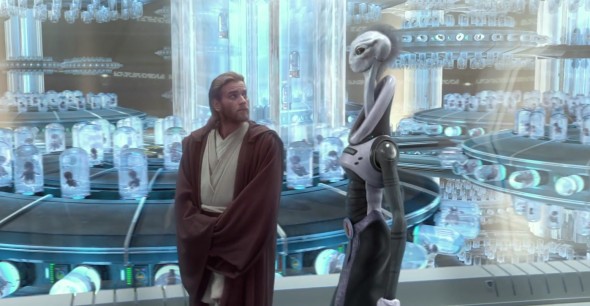
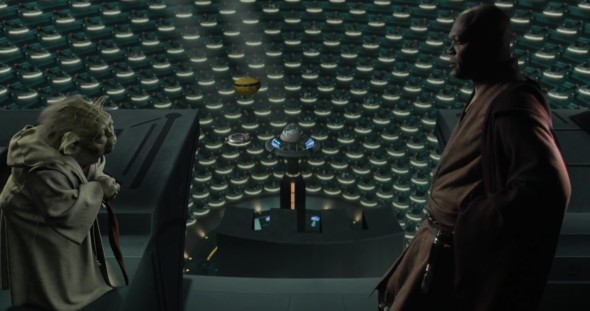

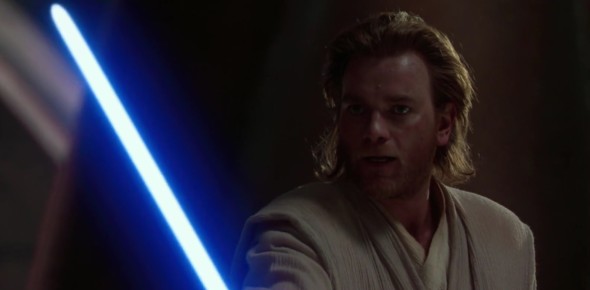

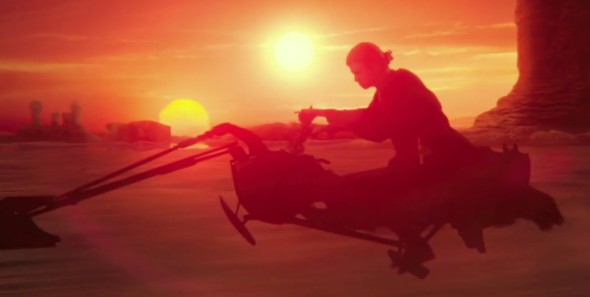
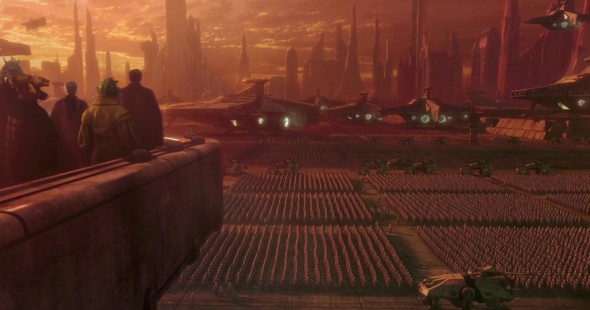
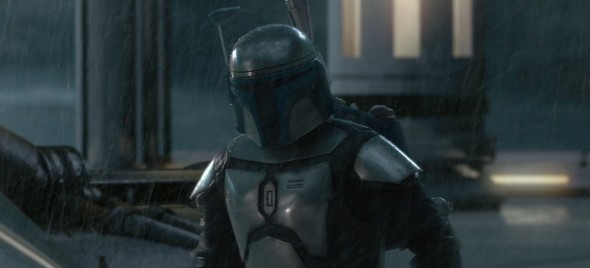

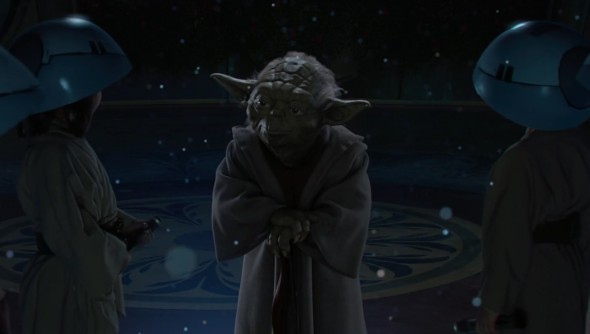
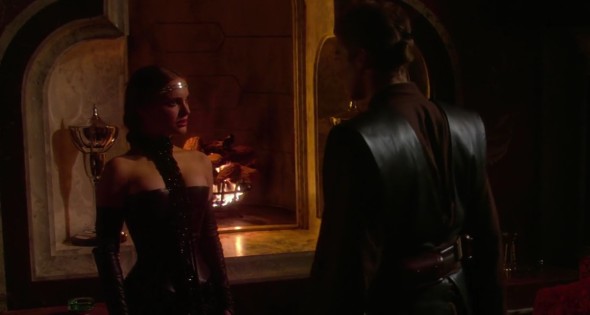
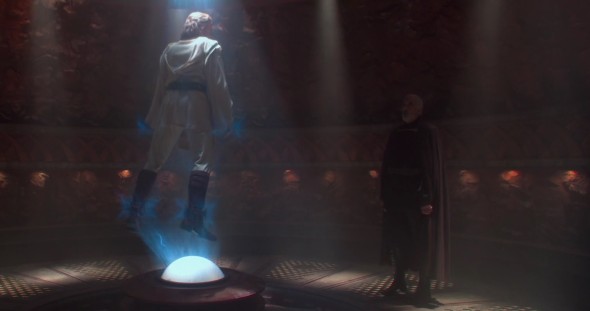
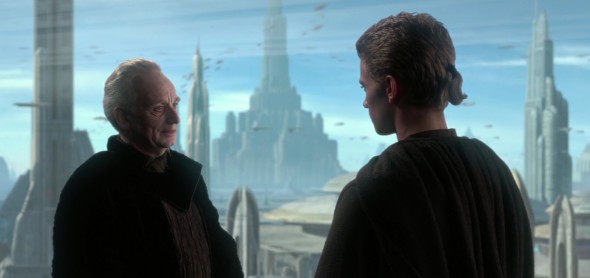
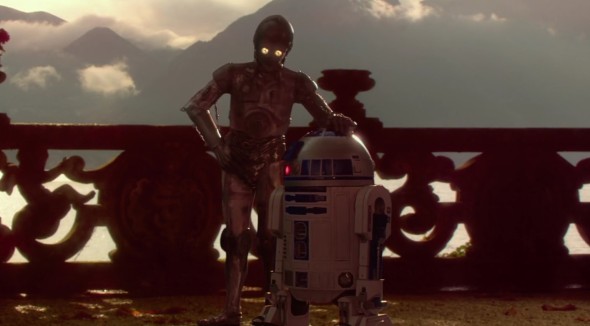
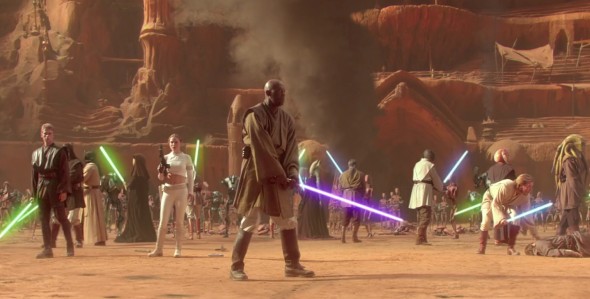
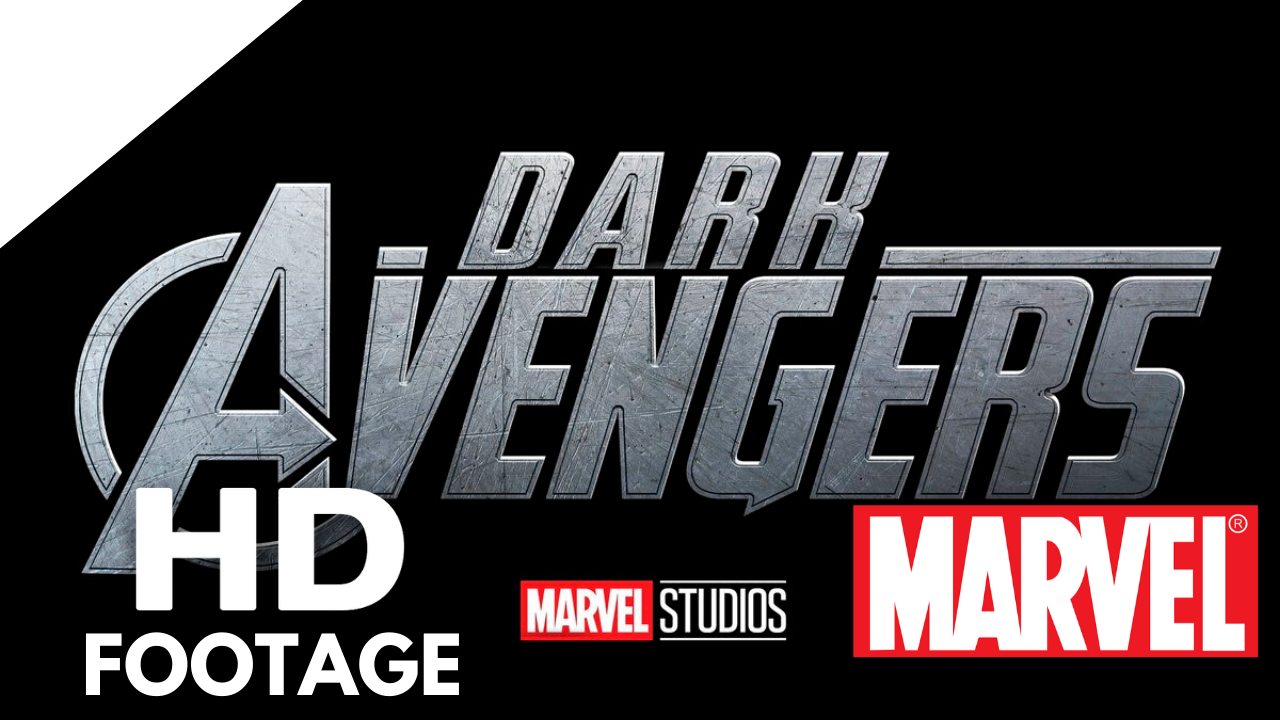
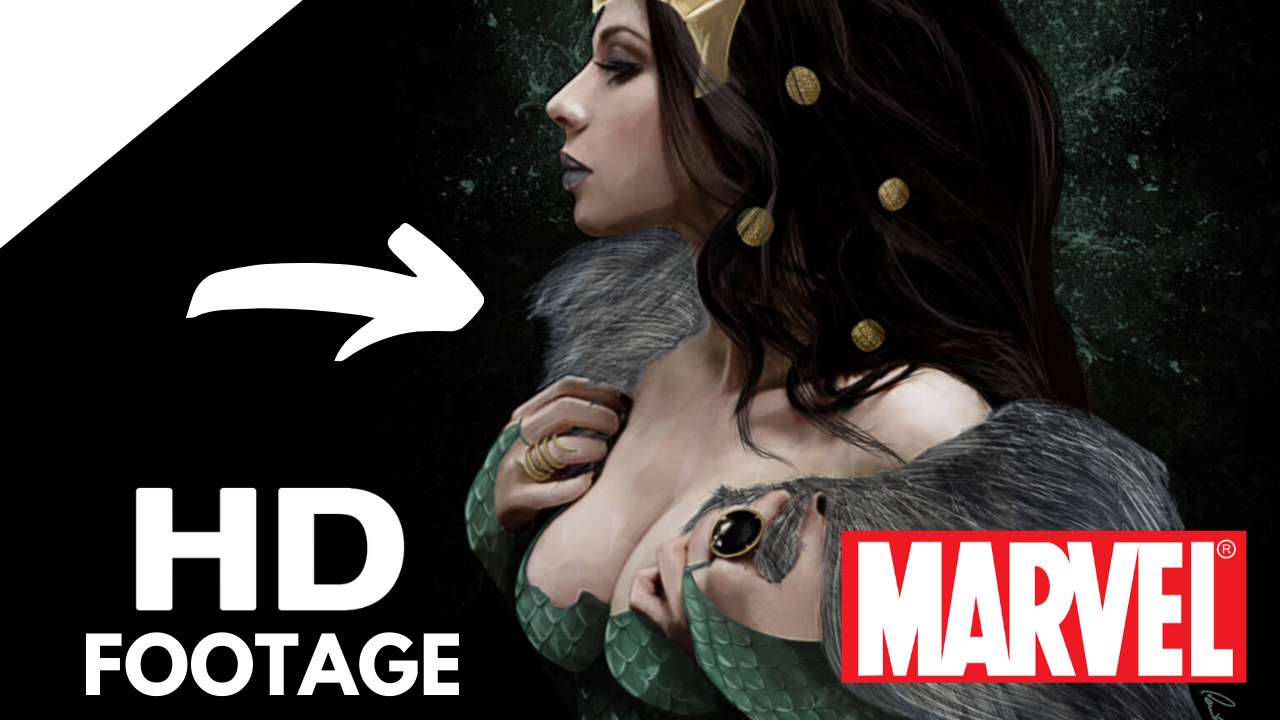
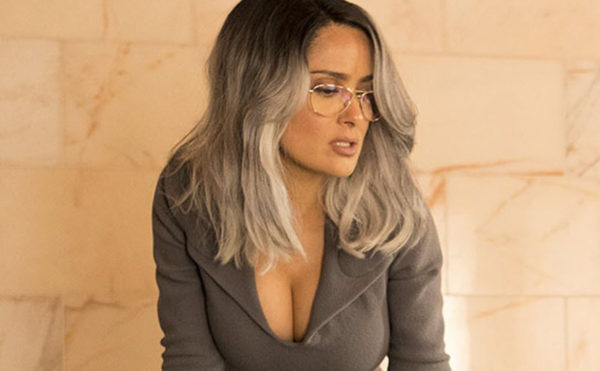
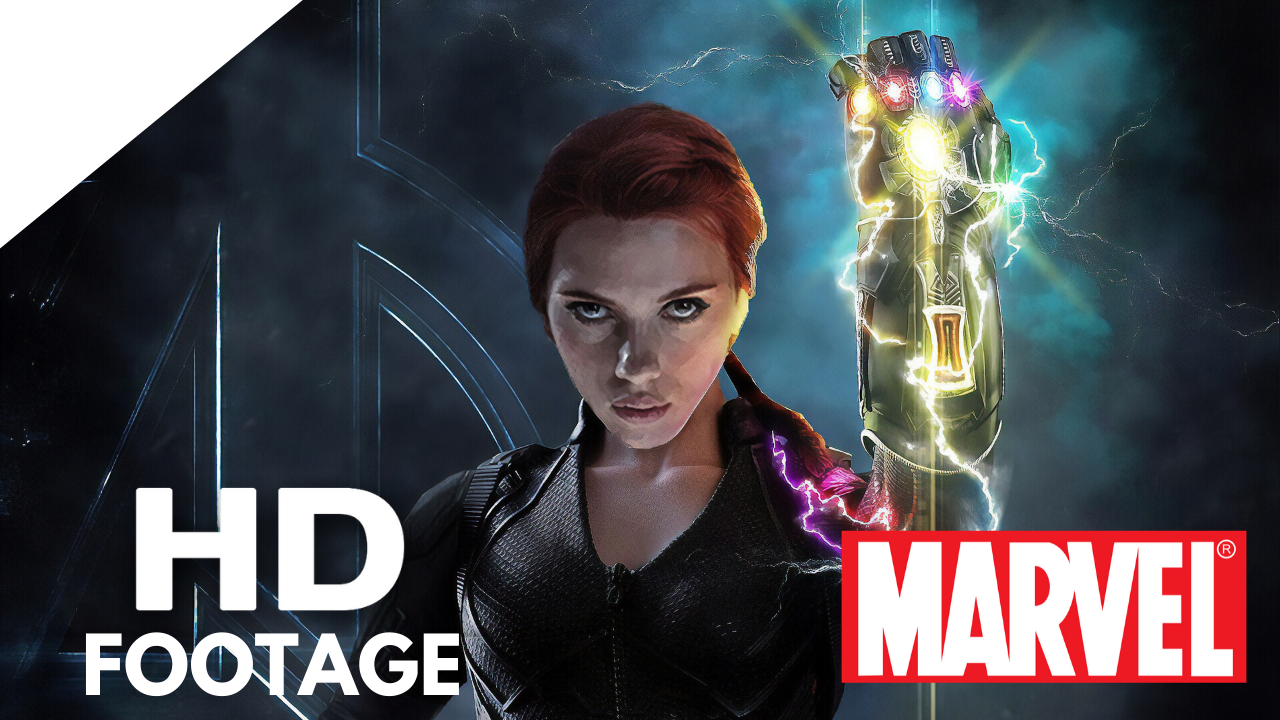
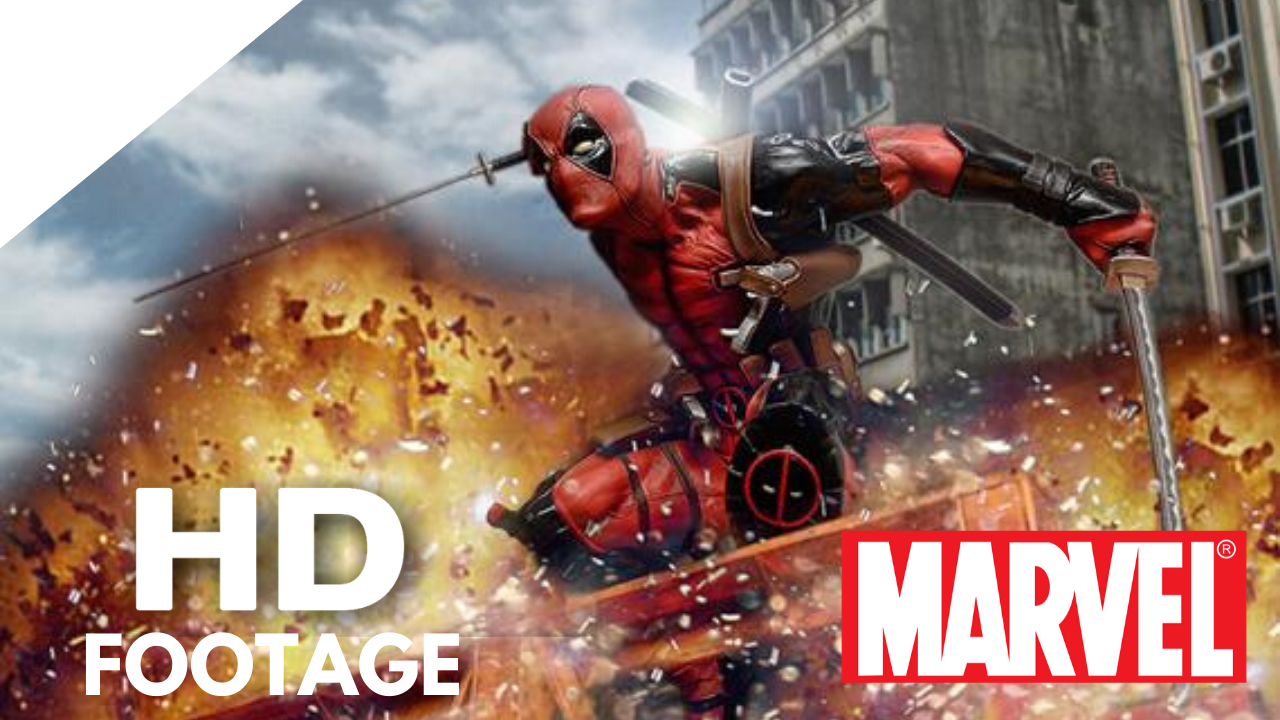

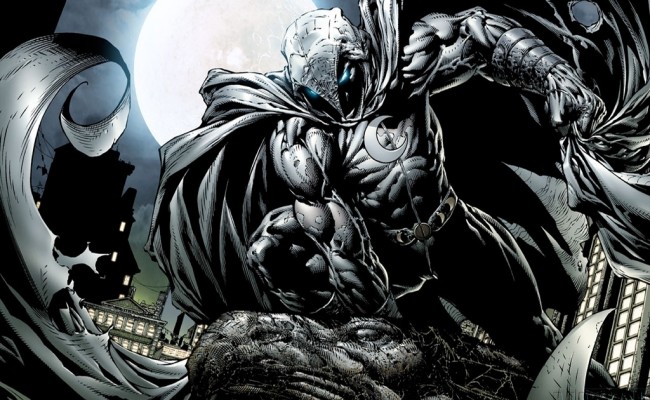
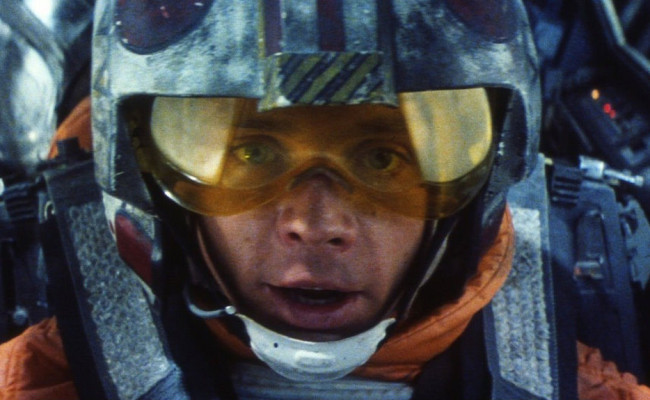
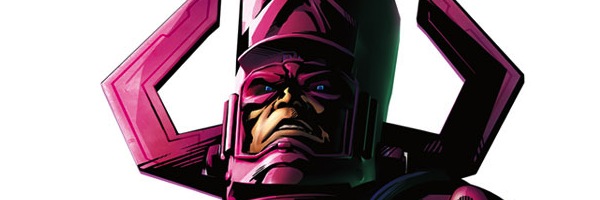
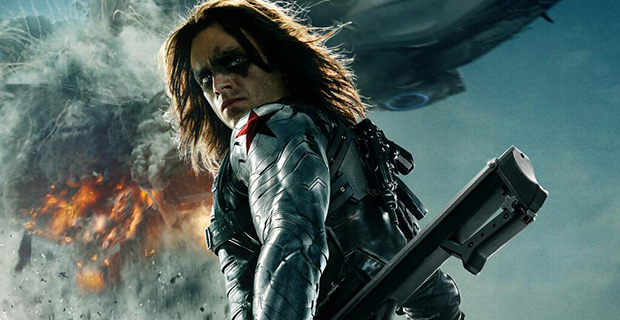
S#!T Talking Central